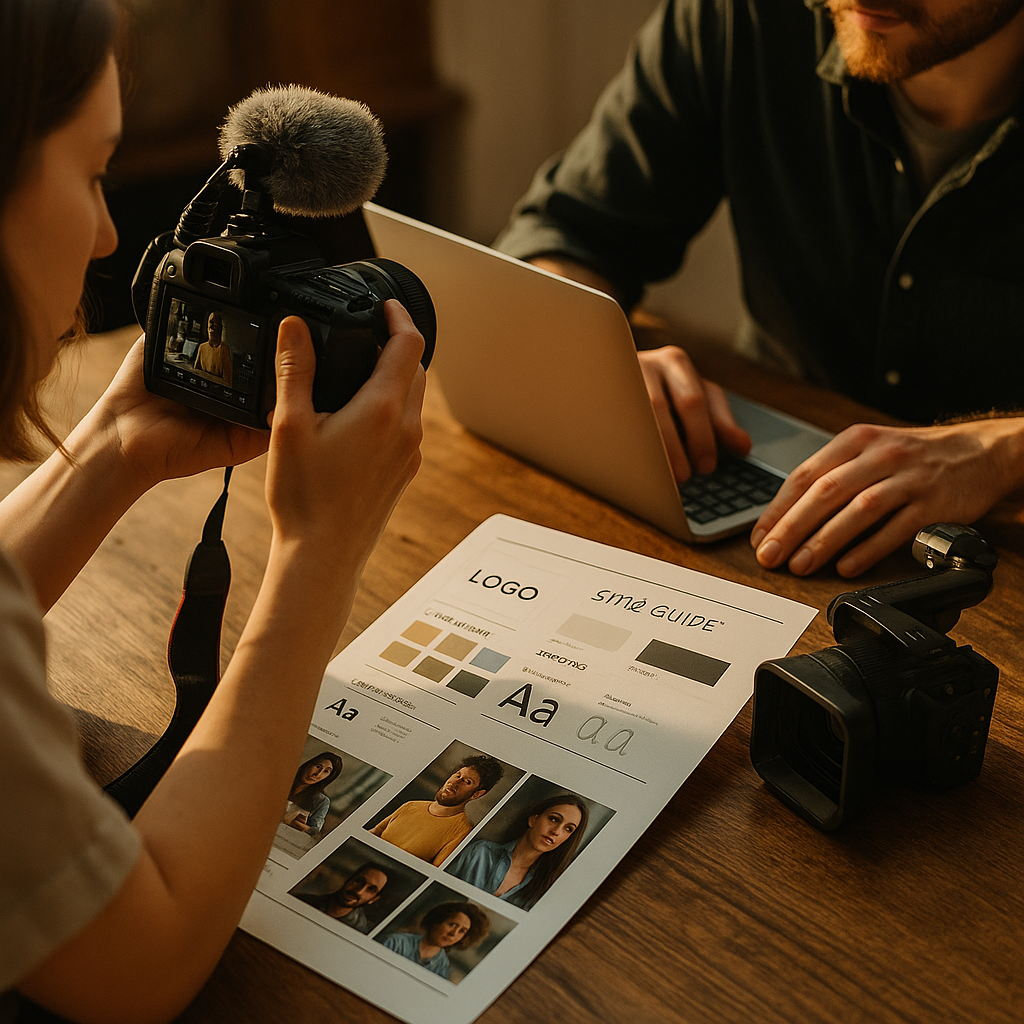Building a consistent and memorable brand demands more than a catchy logo and typography. The primary keyword—brand style guide that includes photography and videography—helps unify your brand across diverse platforms. In 2025, powerful visual documentation is essential. Learn how to create a robust visual style guide that ensures your brand stands out everywhere it appears.
Why Visual Elements Matter in a Modern Brand Style Guide
In a digital-first era, photography and videography speak louder than words. Modern audiences expect professional, consistent visuals that reinforce your brand’s values, personality, and mission. According to recent surveys, 70% of consumers say brand visuals influence their buying decisions. To build trust and recall, your style guide must detail every aspect of your brand’s imagery.
- First Impressions: Imagery often forms the first connection with your audience.
- Brand Recall: Consistent visual cues make your brand instantly recognizable across platforms.
- Emotional Engagement: Thoughtful photography and video create connection and authenticity.
Neglecting the visual component can lead to inconsistent, confusing, or forgettable branding. That’s why you must incorporate well-defined visual guidelines for every digital and print touchpoint.
Key Elements to Include in a Brand Style Guide With Photography
To build an effective brand style guide, outline explicit rules for photography. This reduces subjective interpretation and helps external partners or new team members quickly understand your standards. Here’s what to include:
- Photography Style: Define the mood—bright, moody, candid, posed? Specify color tone, light, and subject matter. Use sample images for clarity.
- Composition Guidelines: Establish rules for image cropping, alignment, focus, and negative space.
- Brand Palette Integration: Ensure photo backgrounds or props reflect your brand’s approved color palette whenever possible.
- Dos and Don’ts: Provide clear examples of acceptable vs. unacceptable imagery. This prevents branding “drift.”
- Usage Rights and Sourcing: Specify where to obtain images, the licensing requirements, and credit protocols to avoid legal troubles.
Updating these sections as trends and business goals evolve will keep your visual identity relevant in 2025 and beyond.
Developing Videography Standards for Brand Consistency
Video is now a cornerstone of digital branding—88% of marketers report increased ROI from video content. Embedding videography instructions in your brand style guide ensures professional, unified content. Consider the following:
- Video Tone and Storytelling: Should your videos feel informal? Authoritative? Fun? Document the desired approach to scripts, narration, and pacing.
- Branding Elements: Clarify logo placement (e.g., intro/outro animations), correct use of lower thirds, and on-screen text for subtitles.
- Visual Style: Describe preferred shot types (e.g., close-ups, drone shots), transitions, graphics, and overlays that align with your brand’s visual DNA.
- Audio Standards: Specify music genres, voiceover tone, and sound effects usage, ensuring they reflect your brand values.
- Technical Specifications: Detail formats, resolution (e.g., 4K minimum), aspect ratio (horizontal, vertical, square), and captioning requirements for accessibility.
- Compliance and Permissions: Address copyright, privacy, and model release protocols for video productions.
With crystal-clear videography rules, your brand ensures every video—whether a social reel or a TV spot—feels unmistakably yours.
Structuring Your Style Guide for Easy Adoption
Even the best visual standards mean little if they’re hard to find or understand. Organize your brand style guide strategically for maximum effectiveness:
- Logical Sections: Separate chapters for photography and videography within your guide, each with clear navigation.
- Real-Life Examples: Use annotated samples so users grasp expectations instantly.
- Downloadable Templates: Offer pre-set Lightroom filters, video title cards, or editing presets for effortless compliance.
- Version Control: Date and document updates clearly, so everyone is working from the latest standards.
- Accessible Language: Avoid jargon. Explain technical terms and rationale behind your requirements.
A well-organized brand style guide empowers every team, agency, or freelancer to maintain your unique brand integrity—no matter how visual trends change.
Enabling Collaboration and Feedback to Improve Your Visual Brand
No brand style guide is ever truly finished. Feedback from your creative teams, partners, and even your audience drives continual improvement. Here’s how to foster collaboration and ensure ongoing value:
- Feedback Loops: Set up regular review periods with photographers, videographers, marketers, and content creators to identify gaps or new needs.
- Centralized Updates: Host your guide in a cloud-based system for immediate access and updates, reducing outdated or conflicting versions.
- Training Sessions: Offer onboarding or workshops to ensure everyone understands and adopts the visual guidelines confidently.
- Monitor Effectiveness: Track visual content performance across platforms to spot whether your imagery and video are resonating—and adjust accordingly.
Open communication keeps your brand visuals sharp and compelling, turning your style guide into a living resource rather than a static document.
FAQs About Creating a Brand Style Guide That Includes Photography and Videography
-
Why should I add photography and videography to my brand style guide?
In 2025, visual content is a brand’s most impactful asset. Including explicit photography and videography standards guarantees consistency, professionalism, and audience trust across all channels.
-
How often should I update my visual style guide?
Review your guide at least annually or whenever you launch new campaigns, products, or enter fresh markets. Regular updates keep your style relevant and consistent.
-
Who should be involved in creating the visual sections?
Include brand managers, marketing leads, graphic designers, photographers, videographers, and legal advisors to ensure all perspectives and technical needs are met.
-
What’s the best way to enforce compliance with the guide?
Centralize the guide in a shared digital platform, incorporate templates, and offer training so everyone can easily follow the standards.
-
Can a small business benefit from a visual style guide?
Absolutely. A clear guide ensures even small teams deliver a professional, recognizable brand presence—crucial for growth and customer loyalty.
Building a brand style guide that includes photography and videography creates a strong, unified voice in a crowded visual landscape. Invest in clear visual standards, encourage collaboration, and watch your brand presence flourish with every image and video you publish.
